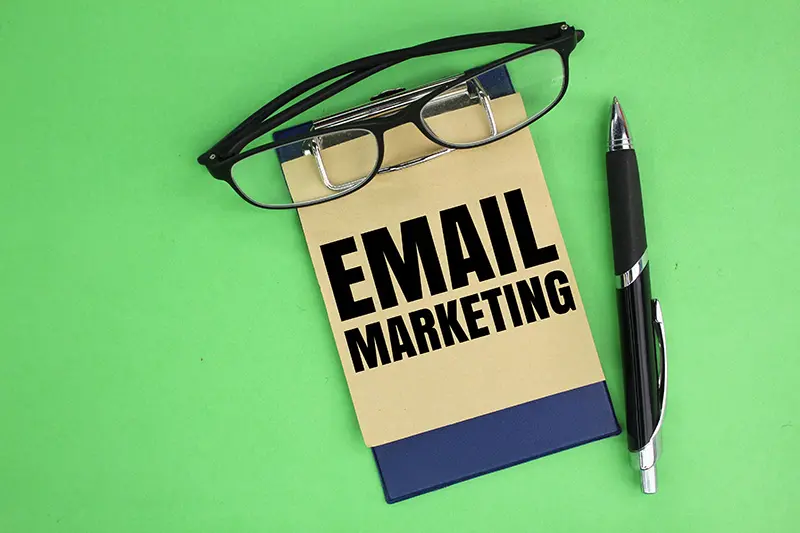For many businesses, a blog is treated as an afterthought. Posts are written sporadically, topics are chosen without strategy, and the blog becomes little more than a collection of company updates or generic industry articles. The truth is that a blog can – and should – be one of the most powerful tools in your marketing toolkit.
When built with intention, your blog becomes a lead generation machine. It attracts qualified visitors who are actively looking for the solutions you provide, builds trust by showing your expertise, and nurtures those visitors toward becoming paying customers. Instead of simply publishing articles for the sake of having content, you can leverage your blog to create measurable growth for your business.
At Koi, we help small businesses and entrepreneurs do exactly that. If you’re ready to take your blog seriously and start turning it into a consistent driver of leads, keep reading – we’ll break down everything you need to know.
Why Blogs Are Essential for Lead Generation
Think about your own behavior online. When you have a problem, you probably search Google for answers. You may end up reading a blog post that provides a step-by-step solution or gives you the background knowledge you need before making a purchase decision. That single piece of content becomes your first interaction with a brand.
Now imagine that brand has a clear pathway for you to follow – maybe a free guide that goes deeper, a simple form to request a consultation, or a link to their services. Suddenly, what started as a casual Google search has turned into the beginning of a customer relationship.
That is the power of blogging for lead generation. It works because it aligns with how people make decisions today. Buyers want to be informed before they commit. They want to know that the company they’re working with understands their challenges. A blog gives you the chance to provide that reassurance while guiding readers toward the next step.
If your blog isn’t currently generating leads, it’s not because blogging doesn’t work. It’s because the strategy behind your blog hasn’t been designed with lead generation in mind.
Step 1: Attract the Right Audience
The first stage in turning your blog into a lead machine is attracting the right visitors. Traffic alone isn’t the goal – you want qualified traffic from people who are likely to become customers.
This begins with knowing your target audience in detail. Who are they? What problems are they struggling with? What questions are they typing into search engines?
For example, if you run a web design agency, your audience might be small business owners frustrated with their outdated websites. Instead of writing generic articles like “The History of Web Design,” you’ll get much better results by publishing posts such as “5 Signs Your Small Business Website Is Costing You Customers” or “How to Choose the Right Website Platform for Growth.” These posts speak directly to your audience’s pain points and position you as a solution provider.
Search engine optimization (SEO) plays a big role here. By optimizing your blog content around the specific keywords your audience is searching for, you increase the likelihood that your posts will rank in Google and bring in organic traffic. Over time, this compounds, turning your blog into a steady stream of highly targeted visitors.
Step 2: Create Valuable Content That Builds Trust
Once you’ve attracted the right readers, the next step is building trust. Visitors won’t hand over their contact information or reach out to you unless they feel confident in your expertise.
The content you publish should go beyond surface-level information. Aim to provide real value. That might mean detailed how-to guides, industry insights, case studies, or even opinion pieces that challenge conventional wisdom. The goal is to demonstrate that you know your field inside and out.
Value also comes from clarity. A blog that is easy to read, well-structured, and visually appealing will hold attention longer. Large blocks of text turn readers away, while clear headings, concise paragraphs, and thoughtful design keep them engaged.
This is where Koi comes in. We don’t just help our clients produce content – we ensure their blogs are designed and structured to keep visitors reading, exploring, and eventually converting.
Step 3: Optimize Your Blog for Conversions
Traffic and trust are essential, but they don’t automatically equal leads. You need to intentionally optimize your blog for conversions.
Think of each blog post as an entry point into your sales funnel. A visitor may not be ready to buy immediately, but you can capture their information and nurture them over time. There are several ways to do this effectively:
- Calls to Action (CTAs): Each blog post should include at least one clear next step. This could be contacting your team, downloading a free resource, or signing up for your email list. The key is to make the CTA relevant to the content of the post.
- Lead Magnets: Offering something of value in exchange for contact information is one of the most effective ways to generate leads. Examples include guides, checklists, or mini-courses. If the blog post is about website mistakes, the lead magnet could be a free “Website Audit Checklist.”
- Forms and Signups: Don’t hide your lead capture forms. Place them where they naturally fit—at the end of posts, in the sidebar, or even as a subtle pop-up.
When these elements are implemented thoughtfully, your blog becomes more than a content hub. It becomes a conversion engine.
Step 4: Keep Readers Engaged
Getting someone to click on one blog post is a win. But the real magic happens when you keep them exploring your site. The longer someone engages with your content, the more trust they build, and the higher the chances they’ll convert.
You can achieve this by creating content clusters – groups of related posts that cover a topic from multiple angles. For instance, a series on “Small Business Website Success” might include posts on SEO basics, mobile optimization, and website speed. Each article links to the others, keeping readers engaged while reinforcing your expertise.
Strong internal linking also helps search engines understand your site structure, boosting your SEO performance.
Step 5: Track, Measure, and Improve
A lead-generating blog isn’t something you set up once and forget about. It requires ongoing refinement. Analytics will show you which posts are attracting the most traffic, which CTAs are converting best, and where readers are dropping off.
With this information, you can double down on what works and improve what doesn’t. Updating older posts to keep them current is especially powerful. A blog post that was written two years ago can continue driving traffic and leads for years if you refresh it with new information and updated CTAs.
The Role of Design in Blog Lead Generation
Many businesses overlook design when thinking about blogging. Yet a poorly designed blog will drive visitors away, no matter how strong the content.
Clean design, mobile responsiveness, fast load times, and intuitive navigation all contribute to higher engagement. When readers enjoy the experience of browsing your blog, they’re more likely to stay, trust you, and take the next step.
At Koi, we blend content strategy with design expertise. That combination ensures your blog doesn’t just look professional – it actively works to grow your business.
Why Work with Koi?
Turning a blog into a lead generation machine takes time, strategy, and consistency. It involves knowing your audience, creating valuable content, optimizing for conversions, and ensuring everything is backed by strong design and analytics. Many business owners struggle to do all of this on their own while also running their companies.
That’s where Koi comes in. We specialize in helping small businesses transform their websites and blogs into powerful growth engines. Whether you need a complete strategy overhaul, better design, or ongoing support, we’re here to help.
Conclusion: Make Your Blog Work for You
Your blog should be more than a place to publish the occasional article. With the right strategy, it becomes a 24/7 sales tool – attracting qualified visitors, building trust, and guiding readers to take action.
If you’re ready to stop treating your blog as an afterthought and start using it as a serious lead generation machine, now is the time to act.
Contact Koi today and let’s talk about how we can turn your blog into a consistent source of leads for your business.



